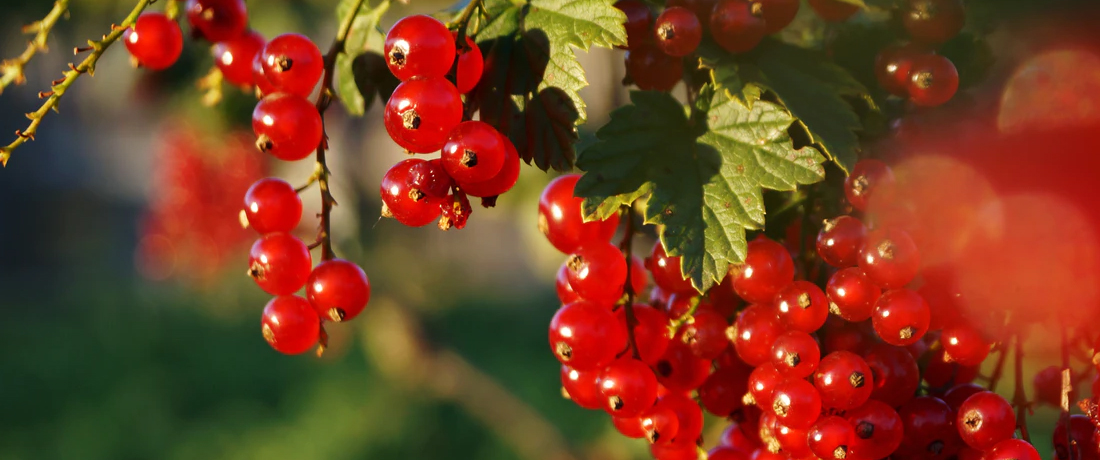
 Important note about plant availability. Important note about plant availability.There are hundreds of factsheets on our website provided for your information. Not all plants will be available at all times throughout the year. To confirm availability please call (03) 8850 3030 and ask for the nursery. |
Currants are small deciduous bushes with origins in cool European lands, where they thrived as forest edge plants, and later as domesticated varieties planted in gardens and hedgerows for their 5mm red, white or ‘black’ (dark purple) berries. This heritage gives a clue to their preferred conditions – moist, slightly acidic soils, with good drainage, lots of rotted leaves or other organic matter, and gentle sunlight – definitely NOT the scorching westerly afternoon sun in Australian summer conditions. In fact, they have the advantage of being one of the few fruits that will produce in light shade… so use them to get more sweet treats out of those garden spots where you thought none would grow! They are also ornamental, with pretty green lobed leaves.
Red and white currants
Ribes rubrum
These small shiny berries are used both raw and cooked. Having a tart and tangy, delicate but intense flavour, they can be contrasted with sweet foods, but also allied with savoury dishes. The tartness is often used to cut through heavy and rich game meats. White currants are simply albino versions of red currants, and have a similar but slightly sweeter flavour. The pretty jewel like berries are fantastic added to berry desserts where their small shiny freshness dramatically improves the appearance. Add a small fresh bunch to champagne glasses for Christmas, stir through cream, sprinkle over desserts, fantastic as a garnish.
Like most fresh fruit, Red Currants are a good source of potassium, manganese, dietary fibre, Vitamins C and K.
Rarely attacked by pests and diseases, as long as it gets some summer shade, a low maintenance, very ornamental shrub.
Black currants
Ribes nigrum
Famous for jams, jellies, syrups and cordials. Too tart to eat many fresh, they can be sprinkled sparingly through berry desserts etc. The fruit has very high levels of vitamin C, good levels of potassium, phosphorus, iron, manganese and vitamin B5.
Pick the berries in summer when dry and ripe.
